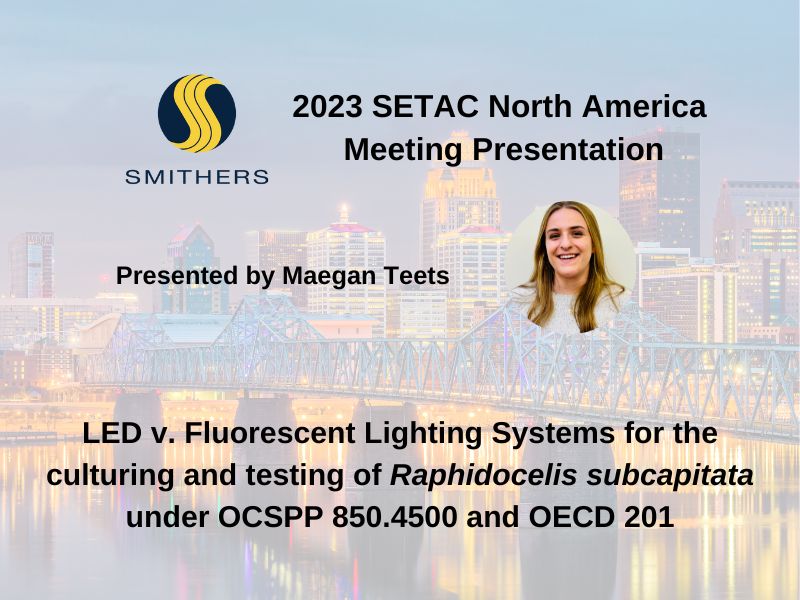2023 SETAC North America Poster Presentations
Smithers exhibited and presented at the SETAC North America 44th Annual Meeting in Louisville, Kentucky.

Lighting type and quality is a critical variable in experiments conducted with photosynthetic organisms such as micro-algae. Algal toxicity guidelines (OCSPP 850.4500 and OECD 201) do not currently specify the type of lighting that should be used in test systems under the validity elements (acceptability criteria). The guidelines contain statements that algae should receive “continuous illumination” from “cool-white fluorescent lights” providing photosynthetically-active radiation. Due to this, fluorescent lighting systems have been used in algal toxicity tests conducted at Smithers. However, in recent years stricter regulations, such as the RoHS (Restriction of Hazardous Substances in Electrical and Electronic Equipment) in the EU, have been made regarding the use of mercury and other heavy metals, which are a key component in fluorescent lights. LED lighting systems have been found to provide sufficient light for green alga growth (Matsumoto, 2018) and can be considered a suitable alterative to fluorescent lights, due to both their increased environmental friendliness and cost effectiveness.
To evaluate the acceptability of LED systems compared to traditional fluorescent systems, the growth of Raphidocelis subcapitata, a species of green alga suggested in both guidelines, was evaluated in 72- and 96-hour test durations. A set of test group vessels were maintained under an LED-lighting system and another set of test group vessels were maintained under a fluorescent-lighting system. Endpoints evaluated were average specific growth rate and yield. Additionally, the sensitivity of R. subcapitata to a reference toxicant (zinc chloride) was evaluated under LED and fluorescent systems to determine if the response is comparable. Based on the cell density at termination of these reference tests, an EC50 was determined and compared to in-house historical reference test data.
Maegan Teets presented this research at the SETAC North America 44th Annual Meeting in Louisville, Kentucky.